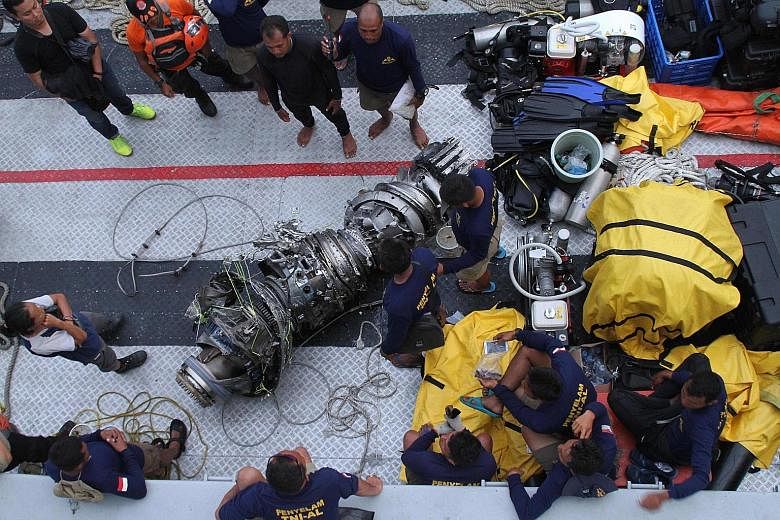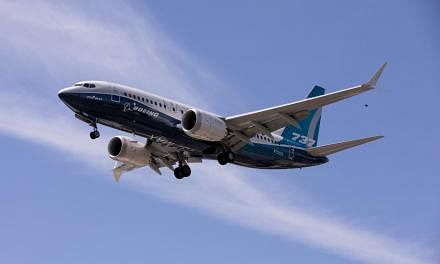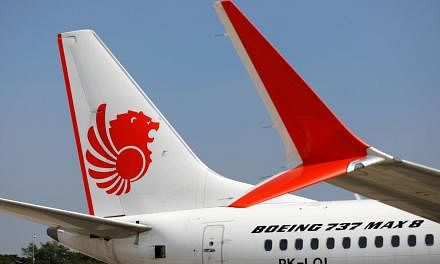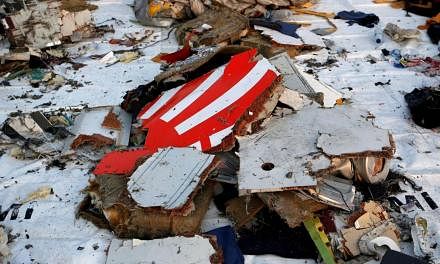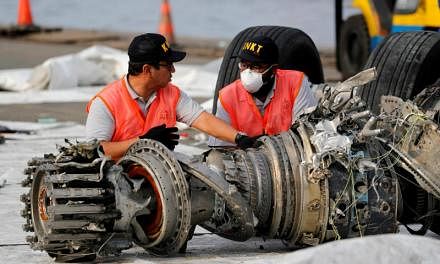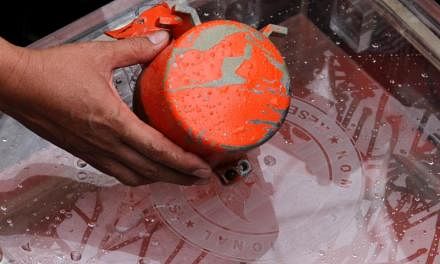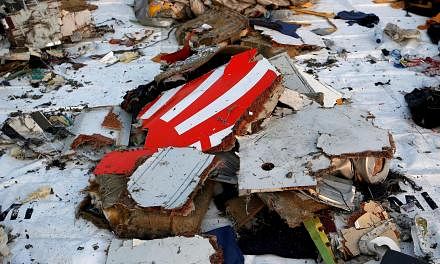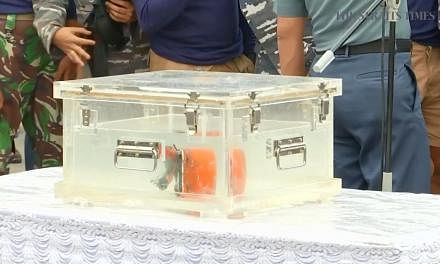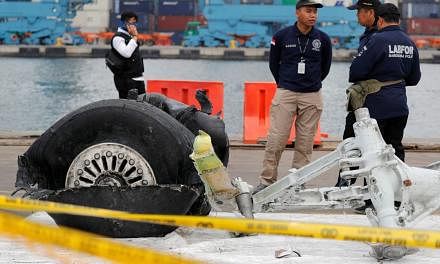The Lion Air plane that crashed just minutes after take-off last month should have been grounded when it ran into problems on its penultimate flight from Bali to Jakarta, said Indonesia's National Transport Safety Committee (KNKT).
"During the flight from Denpasar to Jakarta, the plane experienced a technical problem, but the pilot decided to continue the flight," Mr Nurcahyo Utomo, KNKT sub-committee head for air accidents, said yesterday.
"In our view, the plane was not airworthy and should not have kept flying."
Not only did the plane press on with its journey to Jakarta on the night of Oct 28, it was also put back into service barely seven hours later, after maintenance was done.
A similar problem occurred, and the plane - bound for Pangkal Pinang from Jakarta as Flight JT610 - crashed just minutes after take-off on Oct 29, killing all 189 people on board.
Lion Air had insisted after the crash that the plane, which was manufactured this year and had been in operation only since August, was airworthy.
"The plane from Denpasar (Bali) was released and it was said (to be) airworthy, according to documents and what the technicians have done," said the airline's president director, Mr Edward Sirait, yesterday.
"The plane was airworthy," he added.
But Mr Nurcahyo said the Boeing 737 Max 8 had been dogged by problems on several earlier flights.
Investigators had earlier said that the plane had recurrent issues with airspeed and altitude readings.
The aircraft maintenance log shows that since Oct 26, there had been six reports of problems, including faulty sensor readings.
But each time, the problem was indicated as rectified and the plane cleared to fly, Mr Nurcahyo said at a press conference on the committee's preliminary report on the doomed flight.
New details of Flight JT610's final moments were also included in the report. The co-pilot, just 90 seconds after take-off, asked air traffic control to confirm the plane's altitude, later adding that there was a "flight control problem".
Eleven minutes into the flight, the captain told air traffic control that the jet's altitude could not be determined as instruments were giving different readings. His last words captured were "five thou", as he asked to be cleared to 5,000ft (1,500m).
Seconds later, the flight data recorder - which was retrieved from the sea bed days after the crash - stopped recording.
Recorder data showed that the plane's nose was forced down by an automated anti-stall system, meant to protect the plane against a perceived stall, over two dozen times.
The system, a new feature in Boeing 737 Max planes, receives information on the plane's angle of attack, the angle at which wind is passing over the wing.
There was a discrepancy of 20 degrees between the angle of attack readings on the side of the pilot and that of the co-pilot.
The pilots attempted again and again to bring the jet's nose up, but 13 minutes after take-off, the plane plunged into the sea at a speed of more than 645kmh.
This same issue had plagued the crew on Flight JT43, which made a rocky trip from Bali to Jakarta on Oct 28. Pilots switched off the automatic system, and used manual controls to fly and stabilise the plane. Its angle of attack sensors had also shown a difference of 20 degrees.
"The flight from Denpasar to Jakarta experienced stick shaker activation during the take-off rotation and remained active throughout the flight," the report said, referring to a device that noisily vibrates the control yoke of an aircraft to warn the pilot of an imminent stall.
"This condition is considered as unairworthy condition and the flight shall not be continued."
Boeing, in a statement released after the report's publication, said the company appreciates KNKT's efforts to investigate the cause of the accident, and is "taking every measure to fully understand all aspects of this accident".
The company is working with the US National Transport Safety Board as a technical adviser in its investigation, Boeing said, adding that customers "have our assurance that the 737 Max is as safe as any aeroplane that has ever flown the skies".
While KNKT acknowledged that Lion Air, along with other parties like Boeing, have taken actions to boost safety since the crash, it urged the low-cost carrier to do more to improve its safety culture.
For one, Lion Air should make sure its pilots are able to make proper decisions on whether to continue a flight should issues emerge.
It also told the airline to improve its documentation, pointing out that while there were six flight attendants on the flight, Lion Air's record showed that there were only five on board.
The preliminary report does not fully unravel the mystery behind the crash. That will take time still - KNKT said it plans to finish a complete study within 12 months of the accident.
"This is a report of facts," said Mr Nurcahyo. "There is no analysis or conclusion as not all facts have been collected."
KNKT plans, among other things, to conduct aircraft simulator exercises in the Boeing engineering simulator in the United States.
And it will press on with efforts to retrieve the cockpit voice recorder (CVR) in hopes of shedding light on what the pilots were saying as they fought to keep the plane up.
